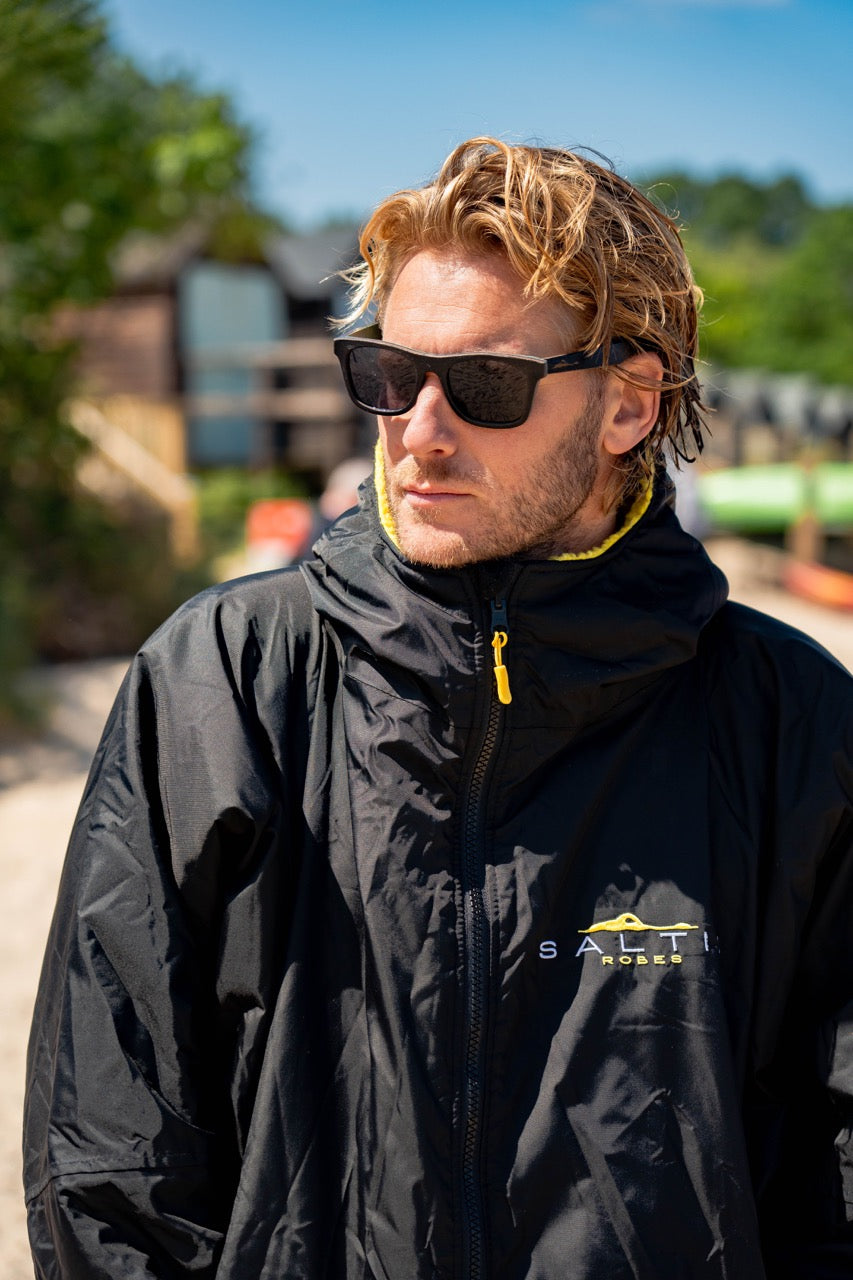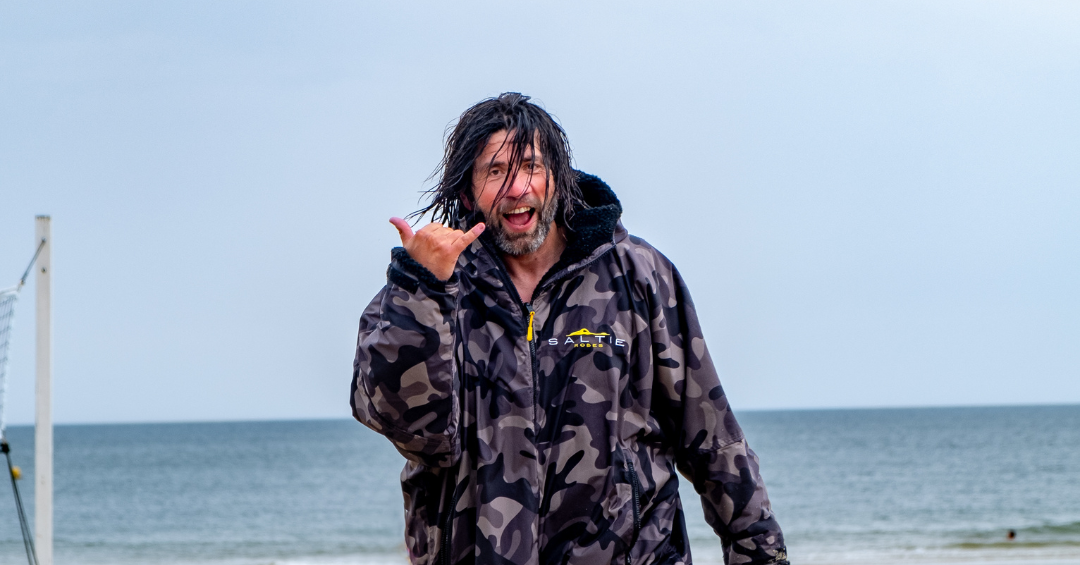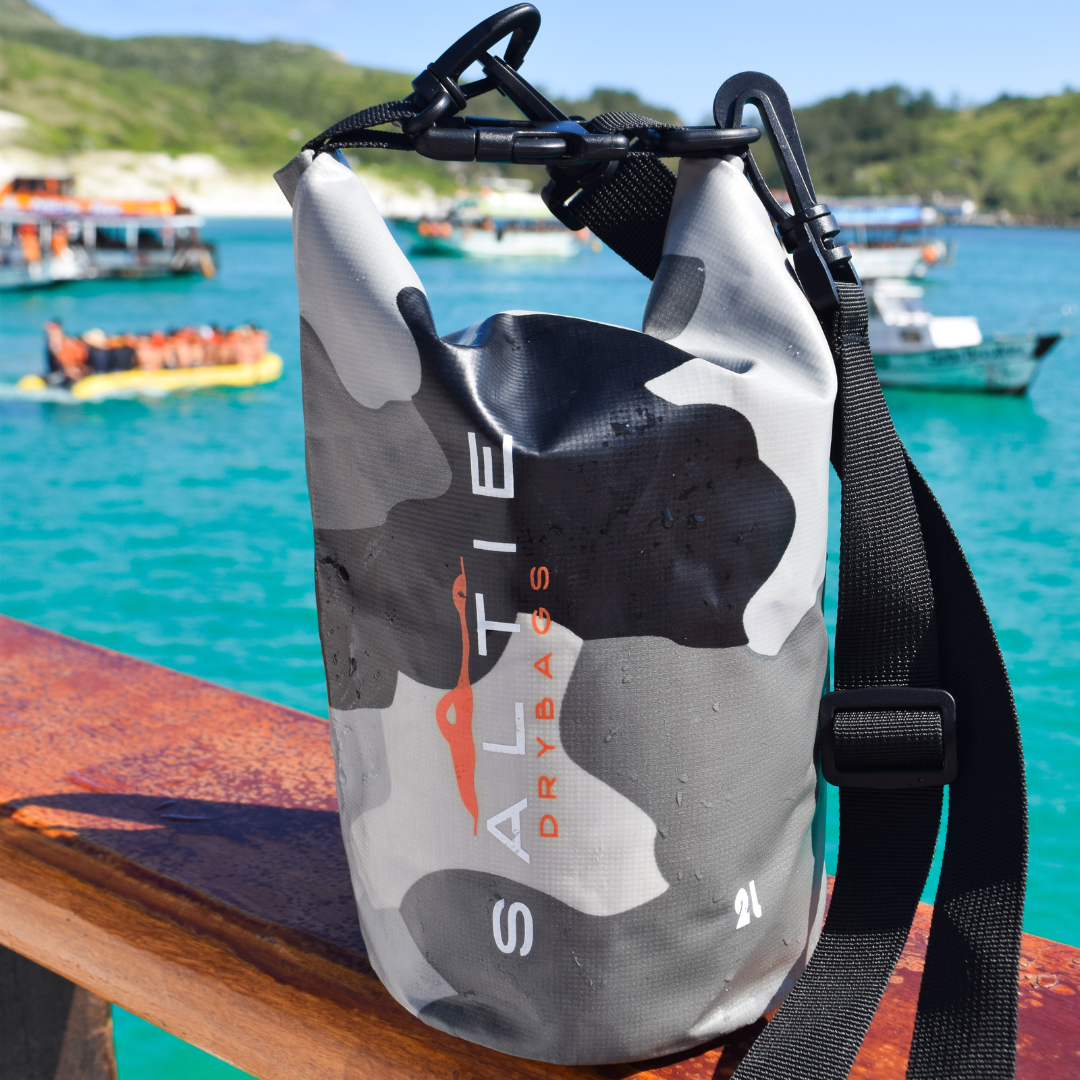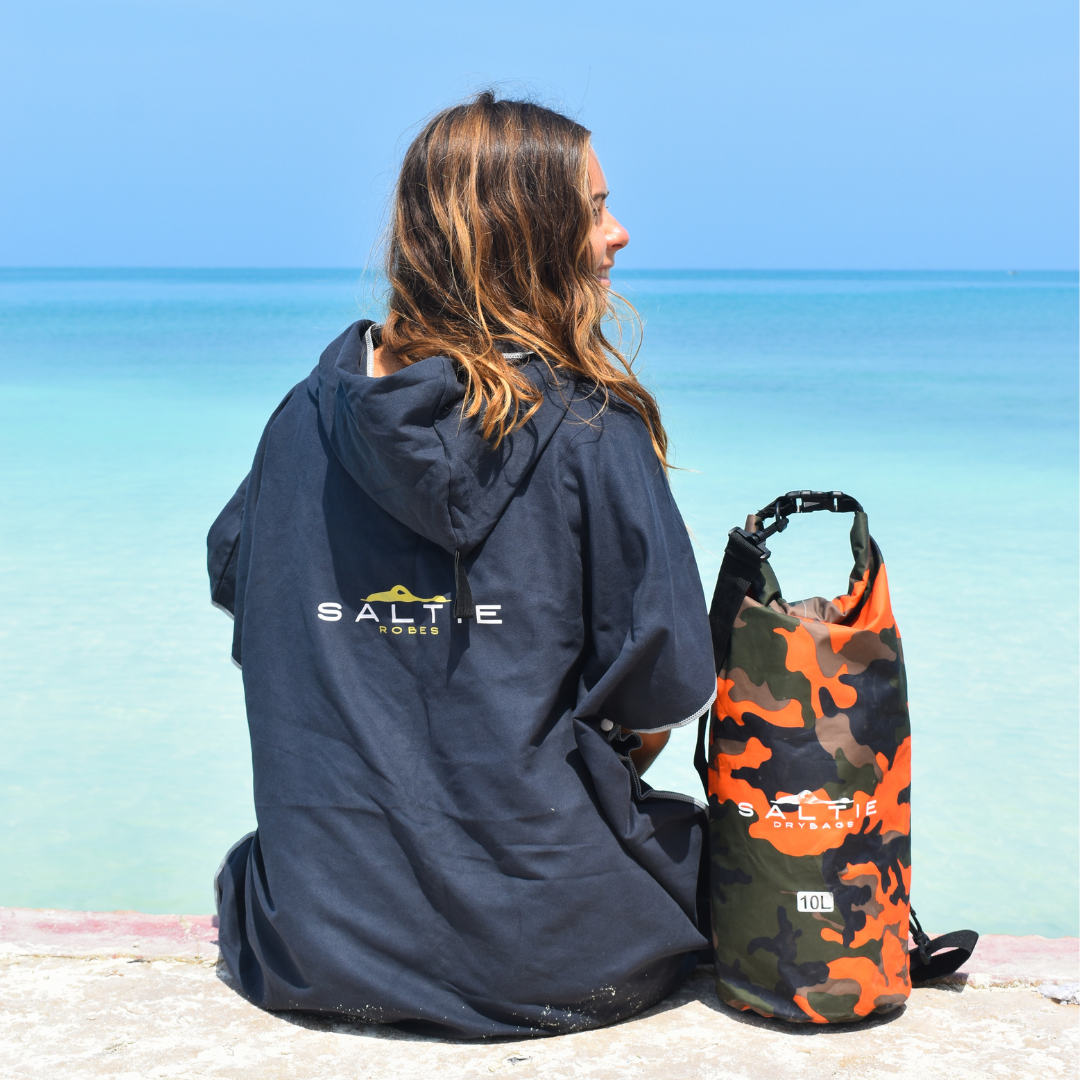The weather is finally warming up and we’re starting to plan trips to the beach and other waterways, abroad and in the UK. Naturally, we’re packing our essentials; our beach waterproof bag and our beach changing robe. But, what else do I need to pack for a paddleboarding trip?
Weather can be unpredictable, especially in the UK, but ensuring that you pack the right clothes and gear can make all the difference for your adventure. It’s not just about wearing the right clothes whilst you are out on your paddleboard but also bringing a DryBag/ beach waterproof bag with you to keep all of your belongings safe and dry whilst you’re out on the water, plus, a beach changing robe or a Saltie Elite Robe. Below we will explore the best clothing to wear while stand-up paddle boarding during the winter and summer months and what essentials to take with you on your next Saltie adventure.

What should I wear to paddleboard in the Summer?
Paddleboarding in the summer months is a whole different ball game to paddleboarding in the winter, just about anything goes. You can wear a few light layers or paddle in just a swimsuit. The choice is up to you and whatever you feel most comfortable in. However, there are still a few other things that you should take into consideration…
Whilst out at sea you are much more susceptible to sunburn as the sun’s rays reflex back up off the water, so be sure to protect yourself with sunscreen whilst carrying extra layers if you’re planning on being out on the water for longer periods of time or when paddling through into the cooler evenings. Also, be aware that the cooler breeze can mask how hot it actually is and how powerful the sun’s rays really are when paddling, so make sure you keep yourself well protected.
Another essential for paddling during the summer months is to wear a hat. Getting a sunstroke is never fun, especially if you’re paddling in the middle of the sea. In scientific terms, wearing a hat outdoors may reduce the level of thermal stress by limiting the amount of solar radiation on the head so if you plan to spend your day paddling in the sunshine, make sure to keep your head protected.
Why Rash Guards are a great idea for SUP’ing
Paddleboarding mixed with wind and saltwater exposure can easily cause chafing and skin irritation – which is not what you want when you’re trying to enjoy a day out on the water – trust us! Rash guards can help prevent this whilst also offering excellent SPF protection.
When choosing a rash guard you want to make sure that it fits snugly. In the summer, you’ll probably prefer a short sleeve or tank top rash guard.
There are multiple different rash guard materials available:
Neoprene: Stretchy and insulated. Ideal for cold weather
Nylon/Spandex: Dries quickly, and provides lots of breathabilities, perfect for hot summer days
Lycra: The stretchiest of options, so it will mould tightly to your body
Polyester: The most breathable, but least stretchy
Why a beach changing robe is essential for the summer
Even during the warmer months, it can still get chilly in the evenings especially here in the UK and after a dip in the water. That’s why it’s so important to have something that you can throw on after being in the water. Plus, it is so handy to have a spot to get changed away from the other people out on the beach or by the lake. That’s why for the warmer months we recommend our Beach Changing Robe.

What do you wear to paddleboard in the winter UK? Including a beach changing robe.
For all of those paddleboard enthusiasts who brave the elements even in subzero temperatures, things can get cold, very quickly. If you’re a surfer then you know that you can get away with a thick full wetsuit, unfortunately, this won’t work whilst paddle boarding. If you are wearing anything thicker than 3mm, your shoulder movement will be fairly impaired and you will find it far harder to paddle.
To avoid this, we recommend wearing a thick pair of neoprene leggings. Your legs will be, most of the time, quite static so they will get the coldest. As a top layer, we recommend a technical, waterproof or neoprene top followed by either a neoprene jacket. Remember that you will more than likely get warm whilst paddleboarding (as long as you don’t fall in) due to the physical exertion so lots of thin layers are your best bet!
A great way to keep your extra layers dry whilst you are out on the water is to use a beach waterproof bag. These can even be tied onto your paddleboard whilst you SUP as a handy way of accessing warmer layers.
There is also the option of wearing a full dry suit, but if you do manage to fall in, it won’t offer you too much protection.
When getting changed out of your wet clothes, a handy accessory to have is a dry changing robe. This will warm and dry you significantly faster than being without it, reducing the risk of hypothermia. For warmer days, we recommend a beach changing robe, which is lighter but just as good for warming you quickly and having a spot to get changed under.

Wetsuits for paddleboarding
Of course, when paddleboarding during the winter months a wetsuit is the most obvious option to wear to keep you warm. When it comes to choosing a wetsuit ensure that you have got one that fits you properly and securely so that it keeps the warm inside. It can be tricky knowing which wetsuit to opt for as there are so many on the market. An easy way to look at one is the thicker your wetsuit is, the warmer it will be.
Thickness options for a wetsuit
There are five different thickness options to choose from, ranging from around 4-6mm. You can see these below:
50°F / 10°C Weather
3-4mm Thick Wetsuit
Neoprene Gloves
3mm Thick Neoprene Booties
30°F / -1C° Weather
4-5mm Thick Wetsuit With A Hood
Neoprene Gloves
5mm Thick Neoprene Booties
10°F / -12°C Weather
5-6 mm Thick Wetsuit With A Hood
Neoprene Gloves
7 mm Thick Neoprene Booties
A personal floatation device/ Buoyancy aid
We always recommend a personal flotation device for SUP riders no matter what time of the year it is, but it’s especially important in the winter when you are more at risk of cold water shock. Choosing the right flotation device means that you are supported in the water if you fall in, but it won’t prevent you from getting out of the water as quickly as possible. We recommend looking for a PFD of at least 50N, which will give you the ability to float if you need to until help arrives.
Add-ons…
Each of these items is extremely nice to have and some are more helpful than others. However, they’re not essential anytime during the year.
Dry Bag: a beach waterproof bag keeps your extra change of clothes or extra layers – or anything else you want to protect nice and dry.
Beach Changing Robe – A Saltie Lite Change Robe is amazing for quickly throwing on after a trip in the water. It will dry you, keep you warm and give you a spot to get changed under.
Dry Changing Robe – A Saltie Elite Robe is the upgraded, warmer version of our beach changing robe. Made of 100% waterproof recycled materials that provide an impenetrable moisture barrier for guaranteed dryness.
SUP Seat: a Detachable Kayak Seat can transform your SUP into a kayak making it great for turning your SUP into a kayak and giving you the option of being able to comfortably sit down for a period of time on the water.
SUP Safety Whistle: you might never (and hopefully won’t) need it, but if something goes wrong, a SUP safety whistle can literally save your life.
Cooler Bag: More so for the summer months these are great to bring snacks and drinks out on the water with you if you’re planning a day out on the water.




